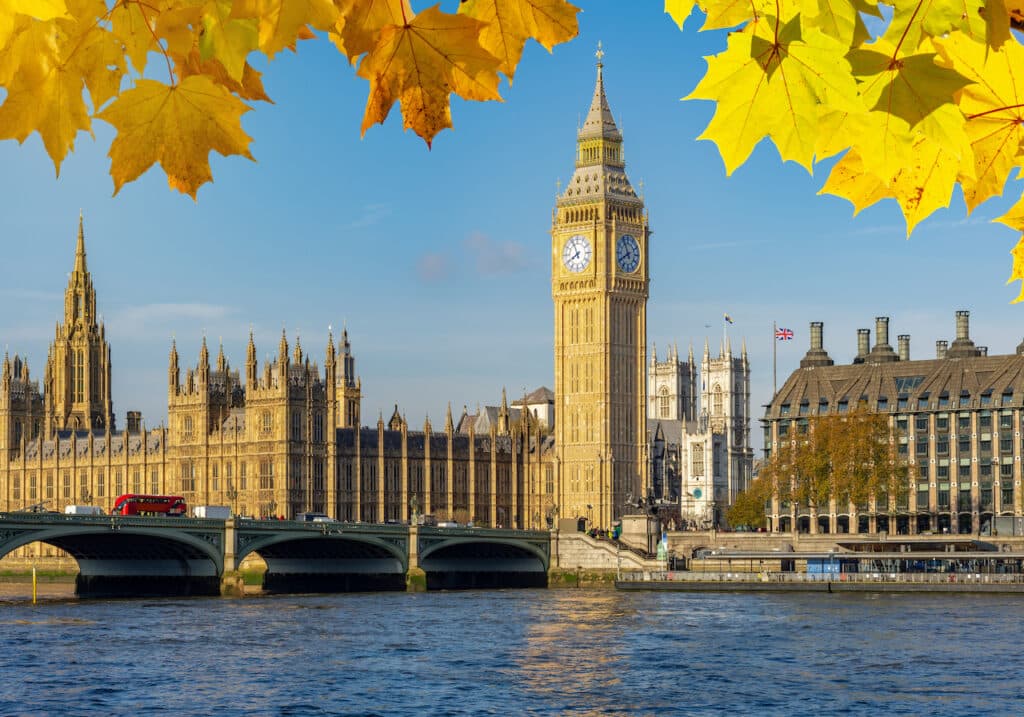Moving to Canada comes with fresh air, friendly neighbors, and the quiet confidence that you’ve made a solid life choice.
What it also comes with—often overlooked until it’s way too late—is a second tax system.
For American expats, the tax reality isn’t either/or. It’s both. You’re still required to file with the Internal Revenue Service (IRS) every year, even while you’re paying taxes to the Canada Revenue Agency (CRA). And while there are treaties and credits designed to prevent double taxation, the process is anything but simple.
Miss a form, misread a threshold, or forget an account—and suddenly you’re not just navigating tax season, you’re explaining yourself to two federal governments.
Understanding how the systems overlap—and where the traps are hidden—can make the difference between smooth sailing and a very expensive surprise.
📋 Key 2025 Updates
- The IRS raised the Foreign Earned Income Exclusion to $130,000 for the 2025 tax year.
- Canada Pension Plan (CPP) contribution limits increased in 2025, raising the maximum pensionable earnings to $69,700.
- New 25% U.S. tariffs on Canadian imports could drive up living costs for expats.
Overview of taxes in Canada
Whether you’re a permanent resident or just testing the snow in British Columbia, understanding how taxes work in Canada is essential—and more layered than many Americans expect.
Unlike the U.S., Canada doesn’t tax based on citizenship, but if you live and earn income there, you’ll be paying Canadian taxes. That includes both federal income tax and provincial or territorial tax, which together determine your total rate. (Yes, even the province you move to affects your tax bill.)
Here’s what every Canadian resident—and many non-residents—should be prepared for:
- Federal and provincial income tax: Rates vary depending on how much you earn and where you live. For example, someone in Alberta will pay a different combined rate than someone in Quebec or B.C.—even on the same salary.
- Payroll deductions: These include Canada Pension Plan (CPP) premiums and Employment Insurance (EI) contributions, which are taken straight from your paycheck (similar to Social Security and Medicare in the U.S.).
- Sales tax: Canada combines a federal Goods and Services Tax (GST) with provincial sales taxes, depending on the region. Expect higher rates in provinces like Quebec and lower ones in Alberta.
- Capital gains and investment income: Only 50% of your capital gains are taxable—but they’re still included in your personal income, and taxed at your marginal rate.
- Corporate and self-employment taxes: If you own a business or freelance in Canada, you’ll face corporate income tax or self-employment tax requirements at both the federal and provincial levels.
The Canada Revenue Agency (CRA) sets tax deadlines based on the calendar year, and most personal tax returns are due by April 30. That said, if you’re self-employed, you may have until June 15 to file—though any taxes owed are still due in April.
Bottom line: your taxable income, filing status, and province of residence all affect your final tax bill.
Canadian income tax basics
Canada employs a progressive tax system with marginal tax rates, meaning your income is taxed in segments, with each portion taxed at its respective rate. This structure ensures that only the income within each bracket is taxed at that bracket’s rate, not your entire income.
| 2025 federal income tax brackets | |
| Taxable Income (in CAD) | Federal Tax Rate |
| Up to $57,375 | 15% |
| $57,376 – $114,750 | 20.5% |
| $114,751 – $177,882 | 26% |
| $177,883 – $253,414 | 29% |
| Over $253,414 | 33% |
Note: The Basic Personal Amount for 2025 is $16,129 CAD, meaning the first $16,129 of your income is tax-free.
Special considerations for U.S. expats
Living in Canada as a U.S. expat adds a few extra layers to your tax picture. It’s not just about understanding Canadian rates—you also need to stay in step with U.S. rules at the same time. A few key factors to keep in mind:
- You’ll still file U.S. taxes: U.S. citizens must report worldwide income to the IRS, even when living and earning in Canada.
- Self-employment brings extra rules: If you’re self-employed, you’ll need to pay into the Canada Pension Plan (CPP) and possibly deal with additional U.S. self-employment tax.
- Multiple income streams can get tricky: Income from investments, rental properties, and side businesses often needs to be reported differently—and in both countries.
Canadian and U.S. tax years align (January 1 to December 31), but when you’re filing in two systems with different credits, rates, and rules, smart planning isn’t just helpful—it’s non-negotiable.
💡 Pro Tip:
Filing in two countries doesn’t mean paying twice—but it does mean keeping excellent records, understanding the timing differences, and getting help when you need it.
Provincial taxes: Not all provinces are equal
Federal income tax is only part of the story. In Canada, where you live makes a real difference to how much tax you’ll pay—sometimes thousands of dollars a year.
Each province and territory sets its own income tax rates and brackets, layered on top of the federal rates. Some, like Alberta, keep rates low and straightforward. Others, like Quebec, run their own tax collection systems entirely—meaning more forms, more paperwork, and often, more taxes.
Here’s why it matters:
- Alberta generally offers the lowest personal income tax rates in Canada, with no provincial sales tax either. If you’re looking to stretch your salary, it’s hard to beat.
- Ontario has moderate income taxes but a higher cost of living, especially in Toronto and surrounding areas.
- Nova Scotia hits higher earners particularly hard, with some of the steepest top marginal rates in the country.
- Saskatchewan sits somewhere in the middle, offering relatively modest tax rates and a lower cost of living compared to bigger provinces.
And then there’s Quebec—in a category of its own.
Quebec residents file a completely separate provincial tax return in addition to their federal return. Provincial tax rates tend to be higher, and the paperwork can feel more complex for new arrivals, especially those without strong French language skills.
Territorial taxes (for Yukon, Northwest Territories, and Nunavut) work similarly but often come with slightly different rates and credits, reflecting the higher cost of living in the North.
Bottom line? Your province doesn’t just shape your lifestyle—it directly impacts your after-tax income too. If you’re flexible about where you settle, running the numbers first can make a big difference.
💡 Pro Tip:
Moving provinces mid-year can trigger different filing requirements—and different tax rates—so it’s smart to check what rules apply before you pack up.
Sales, property, and other everyday taxes in Canada
When you move to Canada, it’s easy to focus on income taxes alone. But a lot of your day-to-day spending will be shaped by other taxes and fees—some of which aren’t obvious until you’re already living there.
Sales tax: Federal and provincial rates
Canada charges a Goods and Services Tax (GST) of 5% nationwide.
On top of that, most provinces either:
- Combine GST with their own provincial sales tax into a single Harmonized Sales Tax (HST), or
- Add a separate provincial sales tax (PST) on top of GST.
Sales tax rates vary widely depending on where you live. For example, Ontario’s HST rate is 13%, while Alberta charges only the federal GST—and no provincial sales tax at all.
💡 Pro Tip:
Sales tax isn’t included in most advertised prices. Expect to pay more at checkout than the sticker says—especially on big purchases like electronics, appliances, or cars.
Property taxes and homeownership costs
If you plan to rent or buy a home in Canada, here are the taxes that may apply:
- Property tax: Charged by your municipality, based on your home’s assessed value. These fund local services like schools, waste collection, and transit.
- Land transfer tax: A one-time tax paid when you buy property. Most provinces charge it; some cities, like Toronto, add a municipal version.
- Speculation and vacancy taxes: In places like British Columbia, you may face extra taxes if your property isn’t your primary residence or is left vacant.
These taxes can vary dramatically across regions, so it’s worth pricing them out before choosing where to live or invest.
Taxes on vehicles, luxury goods, and more
Owning a car in Canada comes with ongoing expenses beyond gas and insurance. Most provinces charge annual vehicle registration fees, which can vary based on your car’s weight, age, emissions, or value.
Also worth noting: since 2022, Canada applies a Luxury Items Tax on high-end purchases.
If you’re buying a car, boat, or private aircraft worth over $100,000 CAD, expect a luxury tax at the point of sale.
Dual filing: What the IRS still expects from you
Moving to Canada doesn’t break up your relationship with the IRS.
If you’re a U.S. citizen or green card holder, you’re required to file a U.S. tax return every year—even if you’re a tax resident of Canada and even if you owe nothing to the U.S. government.
Forms you’ll likely need
- Form 1040: Your standard federal income tax return (filed annually, no matter where you live).
- Form 8938: Required under FATCA to report specified foreign financial assets, such as Canadian bank accounts, investment accounts, and pensions, if you meet the reporting threshold.
- FBAR (FinCEN Form 114): If the aggregate value of your foreign financial accounts exceeds $10,000 USD at any point during the year, you must file this separately with the Treasury Department.
And yes—you may need to file both Form 8938 and the FBAR. They cover similar information, but they’re not interchangeable.
How to reduce or eliminate double taxation
To avoid being taxed twice on the same income, most U.S. expats in Canada rely on one or both of the following:
- Foreign Earned Income Exclusion (Form 2555): Lets you exclude up to $130,000 USD (2025) of foreign-earned income from U.S. taxation, if you meet physical presence or bona fide residency tests.
- Foreign Tax Credit (Form 1116): Gives you dollar-for-dollar credits for income taxes you’ve paid to the Canada Revenue Agency (CRA)—often more useful for high earners or those who don’t qualify for the FEIE.
U.S.–Canada tax treaty: What it covers (and what it doesn’t)
The U.S.–Canada tax treaty is designed to prevent Americans in Canada from being taxed twice on the same income—but it doesn’t let you off the hook entirely.
The treaty coordinates the two systems and outlines which country has the primary right to tax different types of income. But it doesn’t override your U.S. tax filing obligation, and it certainly doesn’t eliminate your reporting requirements.
What the treaty helps with
- Double taxation relief: The treaty works with the Foreign Tax Credit to help you avoid paying income tax twice on things like wages, self-employment income, and pensions.
- Social Security and CPP: Thanks to the U.S.–Canada totalization agreement, you generally only pay into one country’s retirement system at a time.
- Retirement accounts: Canadian RRSPs (Registered Retirement Savings Plans) are recognized under the treaty, meaning you can defer U.S. tax on income inside the account—as long as you make the right election on your tax return.
What it doesn’t cover
- TFSA (Tax-Free Savings Account): While it’s tax-free in Canada, the IRS does not recognize the TFSA as tax-exempt. Any interest, dividends, or capital gains are fully taxable on your U.S. return—and may require complex reporting on the U.S return.
- Canadian corporations and small business income: If you own or operate a Canadian company, income earned through it may be subject to GILTI tax and other complex U.S. rules. The treaty offers little protection here.
- Reporting requirements: The treaty doesn’t exempt you from filing FBARs, Form 8938, or any other international information returns. Even tax-free income still needs to be reported.
💡 Pro Tip:
The treaty helps, but it doesn’t make you invisible to the IRS. Know what’s covered, what isn’t—and when to call in a cross-border tax pro.
Canadian deductions, credits, and retirement contributions
Canadian taxes may be high—but they don’t come without benefits.
If you’re filing as a resident, you’ll find that Canada offers a different toolkit than the U.S.—less about itemizing, more about universal credits, employment-linked deductions, and automatic contributions that actually do something (hello, healthcare).
Understanding what reduces your taxable income—and what lowers your total tax bill—can make a real difference, especially if you’re juggling tax obligations on both sides of the border.
Tax deductions: What you can subtract before tax
Deductions reduce your net income, which lowers the amount of tax you owe. On Canadian returns, the most common ones for U.S. expats include:
- Childcare expenses, if both spouses are working or studying.
- Moving expenses, if you moved at least 40 km closer to a new job, business, or school.
- Student loan interest, if you’re repaying eligible Canadian loans.
- Certain employment expenses, but only if your employer requires them and provides the right paperwork.
Unlike the U.S., Canada doesn’t have itemized deductions for things like mortgage interest. The system is leaner—but still effective when you know what to claim.
Tax contributions: What you’re automatically paying into
Living and working in Canada usually means contributing to:
- Canada Pension Plan (CPP): Canada’s version of Social Security, mandatory for most employees and self-employed individuals.
- Employment Insurance (EI): A payroll deduction that provides short-term benefits if you’re laid off or on parental leave.
- Healthcare premiums: In certain provinces like British Columbia.
These aren’t technically deductions, but they do reduce your net income—and they also provide benefits you’re likely to use. For self-employed expats, contributions can be higher, so it’s worth planning for them.
Tax credits: What lowers your final bill
Credits reduce your actual tax owed, and in some cases, they’re refundable (meaning you can get a payout even if you owe nothing).
Some of the most common credits include:
- Basic personal amount: A non-refundable credit everyone gets.
- GST/HST credit: Income-based and paid quarterly to help offset sales tax.
- Tuition and education credits: For you or transferred from a dependent.
- Climate Action Incentive: Available in provinces with a federal carbon tax.
💡 Pro Tip:
Canadian credits often don’t affect your U.S. return directly, but tracking them matters—especially if you’re coordinating credits and exclusions across both systems.
Common tax mistakes U.S. expats make
Even seasoned expats get tripped up by the U.S.–Canada tax system. And unfortunately, the IRS and the Canada Revenue Agency (CRA) don’t accept “it’s complicated” as a valid excuse.
Here are some of the most common missteps—and how to avoid them:
1. Reporting Canadian income only in Canada
Many U.S. expats assume that if they’re paying Canadian taxes, their U.S. obligations go away.
Not true.
As a U.S. citizen or green card holder, you must report your worldwide income to the IRS—even if you’re fully taxed in Canada.
Failing to report Canadian wages, investment income, or self-employment earnings on your U.S. return can trigger audits and penalties.
2. Overlooking self-employment or small business rules
Canada and the U.S. treat self-employment income differently—and both expect proper reporting.
If you’re self-employed in Canada, you may owe CPP contributions and need to file Canadian GST/HST returns. On the U.S. side, that income is subject to self-employment tax, unless you claim exclusions or credits properly.
Own a Canadian corporation? You could be facing GILTI rules, passive foreign investment company (PFIC) regulations, or additional disclosure forms. Many expats unintentionally walk into complex corporate tax territory without realizing it.
3. Ignoring how the two systems interact
Filing separately in each country without coordinating strategy is one of the costliest mistakes. Why?
- Credits and exclusions don’t always line up across systems.
- Certain accounts (like TFSAs) are tax-free in Canada but taxable in the U.S.
- Elections made on your U.S. return can impact how you’re taxed in Canada (and vice versa).
Bottom line: the U.S. and Canadian systems aren’t mirrors—and treating them like they are can get expensive fast.
When to hire a cross-border tax professional
If you’re juggling taxes in both the U.S. and Canada, it doesn’t take long before the spreadsheets start fighting back. Dual tax obligations can be confusing—and sometimes, dangerously easy to get wrong.
Here’s when it’s time to bring in a pro:
- You own a Canadian business or earn self-employment income: Corporate ownership brings GILTI rules, Subpart F income, and entity classification headaches. A tax professional who understands both IRS and CRA rules can keep you compliant—and out of penalty territory.
- You have complex residency or immigration status: If your time in Canada is split across provinces or you’re navigating PR status, U.S. exit tax rules, or potential treaty tie-breaker issues, don’t go it alone. These filings get technical fast.
- You have accounts or investments with different tax treatment: U.S.-friendly: RRSPs. U.S.-unfriendly: TFSAs, RESPs, and Canadian mutual funds. A cross-border tax advisor can help you avoid unintentional tax exposure—or worse, double taxation.
- You’re planning a major financial move: Selling property? Receiving an inheritance? Thinking about renouncing citizenship? You’ll want a tax plan before the transaction, not after.
The U.S.–Canada tax system isn’t impossible to manage, but it is full of traps for the uninitiated. A good expat CPA won’t just keep you compliant—they’ll help you protect your income, minimize penalties, and sleep better at night.
Don’t let the Canadian tax system surprise you
Moving to Canada may have felt like a fresh start—until the IRS tagged along.
From foreign tax credits to surprise reporting rules, managing U.S. and Canadian taxes at the same time is like trying to play two games of chess on one board. You can do it yourself—but why would you?
Bright!Tax works exclusively with U.S. expats, including those living in Canada, to simplify cross-border tax filing and take the pressure off. No jargon. No missed deadlines. No guesswork.
We speak IRS and CRA—so you don’t have to.
Reach out, and let’s make your move to Canada work on paper, too.
Frequently Asked Questions
-
Do I really have to file U.S. taxes while living in Canada?
Yes. U.S. taxpayers must file annual tax returns with the IRS—even if they’re full-time Canadian residents. This includes reporting your worldwide income and any foreign financial accounts that meet reporting thresholds.
-
Doesn’t the U.S.–Canada tax treaty mean I’m exempt?
Not exactly. While the treaty offers exemptions to help prevent double taxation, it doesn’t exempt you from filing requirements or foreign asset reporting. You’ll still need to submit the right IRS forms and coordinate carefully with your Canadian filings.
-
How do Canadian tax rates compare to U.S. rates?
Canada uses a progressive system with territorial income taxes layered on top of federal ones. Depending on your province and income level, your total tax bill may be higher—but also offset by different credits and social benefits. A good tax calculator (or a great tax advisor) can help you estimate your combined liability.
-
Is tax policy the same in Canada and the U.S.?
Not at all. Canada’s tax policy emphasizes social programs and provincial taxation, while the U.S. system relies more on deductions and credits—understanding both is key to avoiding costly overlaps or missed opportunities.
-
What Canadian accounts cause problems with the IRS?
The most common ones: TFSAs, RESPS, and Canadian mutual funds. These are often tax-free in Canada but taxable in the U.S., and they may require complex reporting under IRS rules. RRSPs are better—if you make the proper election.
-
Where can I find official info on Canadian tax rules?
The Government of Canada maintains current tax details at canada.ca. It’s a solid starting point, but it won’t explain how those rules interact with the IRS. That’s where cross-border expertise comes in.

 Connect on LinkedIn
Connect on LinkedIn

